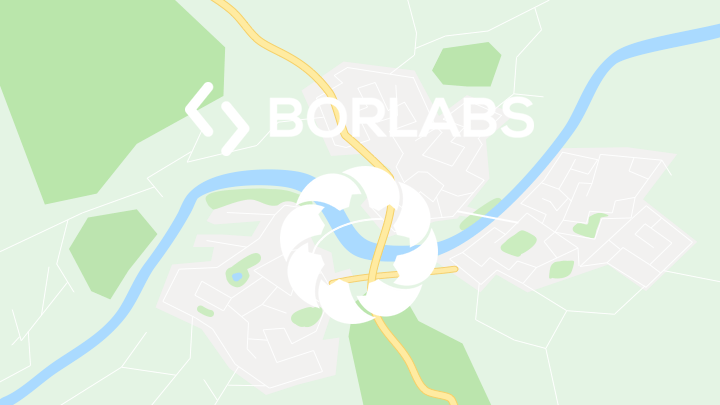A portion of our donations is directed to helping fund sober housing for those in early recovery. Each city or county may have different programs, so it’s worth visiting local housing authority offices to find out what’s available. The process might involve paperwork, but it’s well worth the effort for the support you can get. AZCIR is part of the Mental Health Parity Collaborative, a group of newsrooms that are covering stories on mental health care access and inequities in the U.S.
- Differences between the two can stem from funding, length of stay, and requirements to apply to live there.
- That summer, AHCCCS staff were wrestling with how to keep providers from reaping huge profits with a single billing code meant for serving people in need of intensive outpatient help for addiction, including counseling.
- The houses are run by residents and emphasize peer support as an essential component of recovery.
- At the same time, state health inspectors were discovering that Beyond4Wallz failed to supervise staff, according to state health department records.
Sober living homes encourage participation in group meetings, household tasks, and sometimes, holistic practices such as meditation and mindfulness. Individuals in sober homes share a common goal of long-term sobriety and wellness. Members of the sober living community support and motivate each other to avoid relapsing into past behaviors. Halfway houses date back to the 1830s when they housed children and adults that had committed crimes or had been released from prison.
Finally, we’ll help you ease back into real life at the pace that works best for you. The problem of addiction lies in the mind, which convinces us over and over that we can control our use and that next time will be different. Family owned and operated since 2014, Infinite Recovery was founded by Michael & Ylianna Dadashi to give those struggling with addiction a second chance and help to rebuild their lives. Clean and sober since 2009, Michael is passionate about helping others discover their authentic self and live a life of true freedom and purpose.
Look Into Government Assistance Programs
Numerous studies have shown that most people who live in sober homes after attending treatment have low rates of relapse and are able to live productive lives. Sober living homes are realistic, cost-effective living environmentsr for people in recovery. Infinite Recovery in Austin, TX offers a supportive, structured sober living environment to help you succeed. With the right mix of accountability and community, we’re here to help you build a life free from addiction. Many studies have shown that the best-practice rehabilitation treatment provides continuity of care post-discharge. Sober homes allow individuals to continue with elements of their recovery treatment even after their formal rehab program has finished.
Recovery housing is specifically designed to support individuals with substance use issues to initiate and sustain long-term recovery. These houses or housing programs may go by many names such as Oxford Houses, sober living, recovery homes recovery residences, and therapeutic communities. No matter what they are called, recovery housing promotes recovery from substance use founded on social model recovery principles which leads to long-term sobriety, improved health and wellness, and community involvement.
Gender-Specific Sober Living Homes
Nor have they received an acknowledgment of their loss — not from AHCCCS or the owners of the sober living homes where he stayed. According to police, Jeffrey Hustito checked Living in a Sober House: Fundamental Rules into another sober living home on Dec. 26, this one in the suburb of Glendale. He later smoked fentanyl with another resident and laid down to sleep around 1 a.m.
Things to Consider Before Reconciling With Family
For women, sober living homes offer a safe space to heal and rebuild their lives free from addiction. Gender-specific sober living homes are especially popular because they help people avoid the distractions of romantic relationships, which can sometimes take the focus off recovery. While some may include a focus on substance abuse recovery, they aren’t always specifically designed for that purpose. All sober houses have a zero-tolerance policy regarding the use of drugs or alcohol.
- It’s essential for individuals to assess their unique recovery goals and preferences when considering sober living as part of their journey.
- They called their experiment in group living and joint sobriety Oxford House.
- In November 2024, her office announced a $6 million grant program for tribal nations affected by the sober living home fraud.
- One trip to Banner Desert Medical Center was on Dec. 9, a day after he turned 43.
- They provide a balance of supervision and independence that allows people to transition back to work, school and daily life.
Memorial Day Is a High Risk for Underage Drinking and Drug Abuse
Note ATLAS currently includes facilities in 10 states – Delaware, Florida, Louisiana, Massachusetts, New Jersey, New York, North Carolina, Oklahoma, Pennsylvania, https://northiowatoday.com/2025/01/27/sober-house-rules-what-you-should-know-before-moving-in/ and West Virginia – but plans to expand nationally. Substance Abuse and Mental Health Services Administration (SAMHSA) is the agency within the U.S. Department of Health and Human Services that leads public health efforts to advance the behavioral health of the nation. Recovery meetings are filled with people who have been where you are now, and many are eager to help others. Don’t be afraid to ask around, whether it’s your sponsor, someone you met in rehab, or people in your local meetings. Yes, we understand the importance of pets in recovery, and we offer pet-friendly accommodations to make your stay more comfortable and stress-free.
- The supportive networks and strong community ties formed within these homes can significantly enhance an individual’s recovery experience, underscoring their role in promoting sustained sobriety and healthier lifestyles.
- They create an empowering environment where women can connect, share their experiences, and support one another, building a strong sense of community and resilience.
- For women, sober living homes offer a safe space to heal and rebuild their lives free from addiction.
- One study into Oxford House recovery homes found that they reduce relapse by providing closer monitoring and referring additional services to residents with a history of severe addiction.
- A white van pulled up to the Hustito family’s house to take him back to Phoenix.
For a couple of months in 1975, he found himself living on the streets and begging strangers for money before he entered a rehabilitation program. He moved to a county-run halfway house in Silver Spring, MD, to recover but soon learned that the facility was about to close. I just had to follow the rules, get along with everyone, and work on my recovery. But together we have learned to manage and maintain the house and interact as a family.
His family said they sent him money for the game, only for him to learn he was being disciplined and wouldn’t attend the game after all. A medical examiner would later note that in his final weeks, Hustito made multiple emergency room visits. One trip to Banner Desert Medical Center was on Dec. 9, a day after he turned 43. Authorities said he drank a half bottle of rum and smoked fentanyl at his sober living home. State records show the business, which received a state health department license in April 2021, was reimbursed $3.5 million from Medicaid that year. The next year, Beyond4Wallz’s Medicaid claims more than tripled, to $11.1 million.
Today, most sober homes are unregulated, but some homes are part of larger organizations such as Oxford House, the Florida Association of Recovery Residences or the New Jersey Alliance of Recovery Residences. It includes building relationships, supporting others and practicing healthy ways to overcome triggers. In addition, participants will develop a detailed relapse prevention plan to aid in recovery. Graduates of the Sober Living Program may enter long-term housing options at the Shelter or at Hotel Louisville. Many graduates secure outside employment, live on-site save money, then move out to a market-rate apartment.
Sober living homes play a pivotal role in bridging the gap between structured inpatient treatment and independent living for individuals recovering from substance use disorders. By providing a structured, supportive environment free from drugs and alcohol, these homes offer essential resources that help residents maintain their sobriety. However, it’s crucial for individuals to evaluate their specific needs and circumstances to determine if this type of environment is the right choice for their recovery journey. If you or a loved one is due to finish treatment for drug or alcohol addiction and are worried about the temptations of daily life, staying in a sober living house may be the right choice for you.
First, think about your specific needs and where you are in your recovery journey. For example, if you’ve relapsed after returning home from treatment in the past, you might consider trying another living environment, like a sober living home. However, if your home environment isn’t stable, returning can potentially result in a big setback in your recovery journey. If your home still holds the people and things that trigger your substance use, returning could cause you to relapse.1 Sometimes it helps to separate from the people and places contributing to your addiction.


